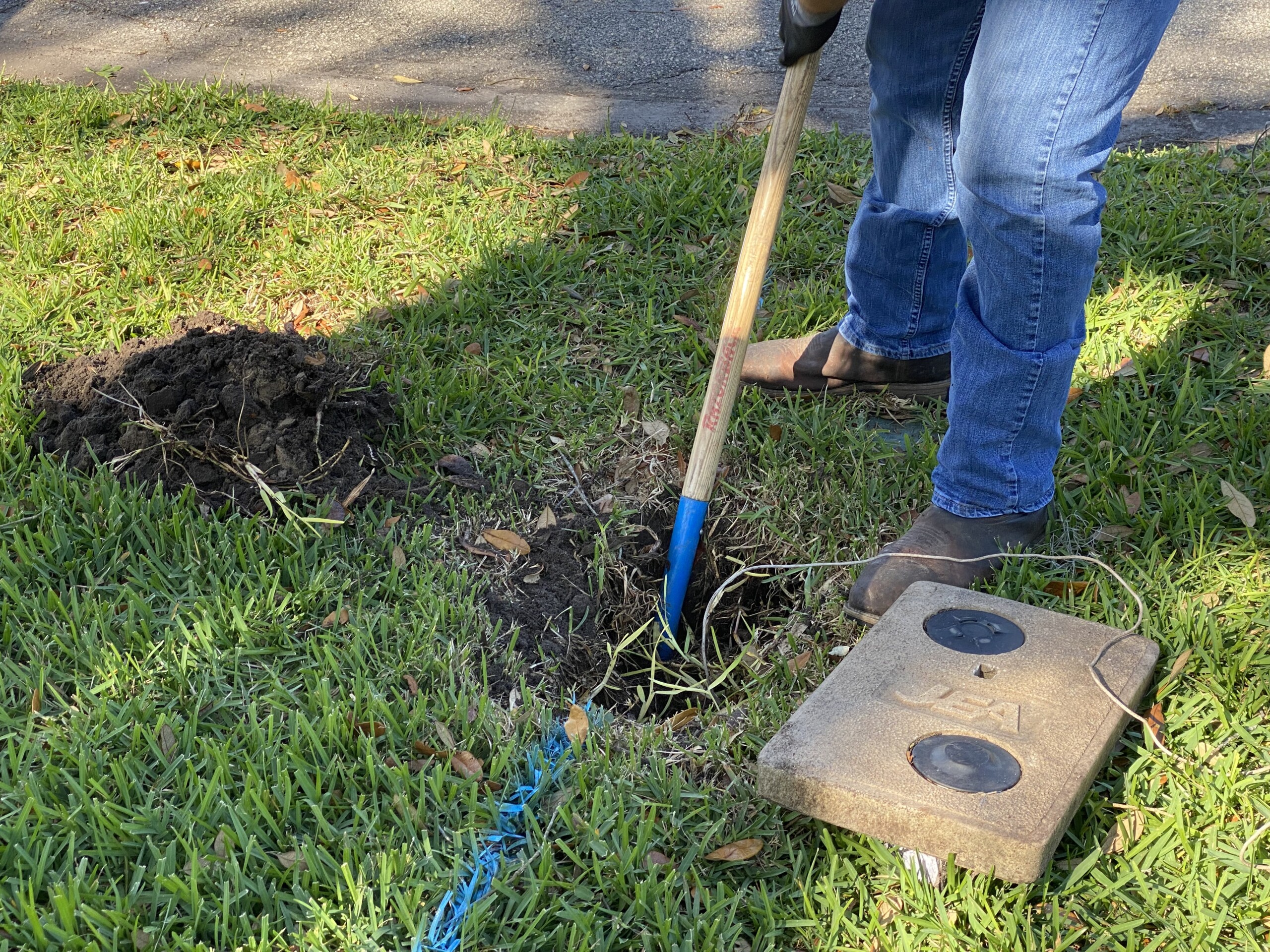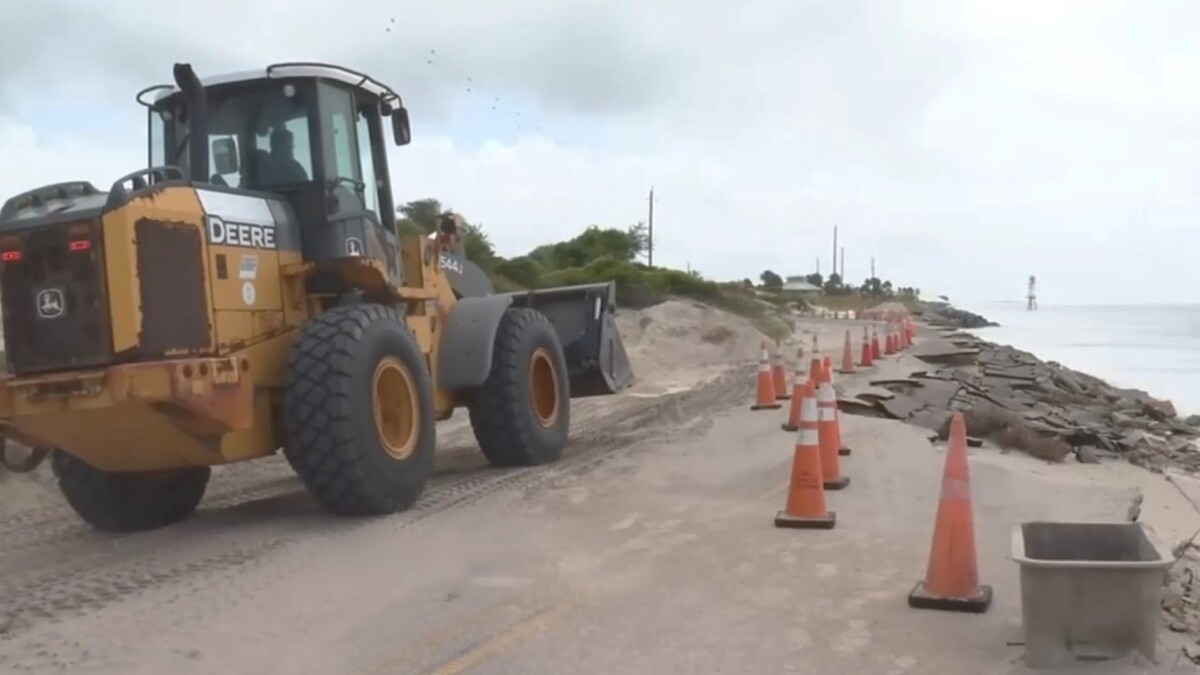Carrying out federal guidelines, JEA is inspecting 4,000 miles of water pipes to detect lead contamination that could make tap water unsafe.
JEA has been testing for lead contamination for years, but the main difference now is that the utility is also testing and taking inventory of pipes on the customer side of the lines — infrastructure that is generally the homeowner’s financial responsibility.
According to the Environmental Protection Agency, exposure to lead in drinking water can cause serious health effects in all age groups. Infants and children can have decreases in IQ and attention span. Lead exposure can lead to new learning and behavior problems or exacerbate existing learning and behavior problems. The children of women who are exposed to lead before or during pregnancy can have increased risk of these adverse health effects. Adults can have increased risks of heart disease, high blood pressure, and kidney or nervous system problems.
The Biden administration has previously said it wants all of the nation’s roughly 9 million lead pipes to be quickly removed, according to news reports. Lead pipes sometimes connect water mains in the street to homes and, if used in home construction, are typically the biggest source of lead in drinking water. They are most common in older, industrial parts of the country. Lead crises have hit poorer, majority-Black cities like Flint, Michigan, especially hard, and after the crises, tap water use declined nationally.
JEA’s Water Service Line Verification Project — which is expected to take several years to complete — aims to help determine whether there are lead water service lines remaining in the utility’s water system.
The project is being split into two phases.
Phase 1 includes verification of water service lines in JEA’s service territory, an inventory of water lines for homes built in 1986 or later (when lead pipes were banned from use in building), plus inspections of more than 400 randomly selected customer water service lines. If you were among the selected JEA customers, you would have already received a notice in the mail to alert you of the inspections.
Phase 1 of the project is wrapping up, said Kevin Holbrooks, JEA’s director of environmental operations. The utility has completed about 70% of the inventory, he said.
“To date, out of that 70%, we have not found any lead service lines,” Holbrooks said in his office at the JEA laboratory this week. “So that’s good news.”

Over the next 1½ years, JEA aims to inventory every one of its service connections.
“Just to kind of give you an idea of how much — that’s like 420,000 service connections,” Holbrooks said. He said JEA has whittled that number down to around 126,000 homes that it still needs to take note of.
Phase 2 will call for customers to complete a water service line self-verification if their home was built prior to June 1986, when the Safe Drinking Water Act was amended to prohibit plumbing material that was not lead-free.
Holbrooks said Phase 2 aims to help homeowners check their own lines for lead pipes or get on a list to have JEA check for them.
There will be a web page so customers can see if their home is in need of lead testing, as well as educational aids to help walk people through the process of checking their homes for lead risks.
“There’ll be videos and tutorials, if you want to do your own inventory,” Holbrooks said. “If not, and you want to know what your line is, or you aren’t sure what your line is, you can always put a request in to us. And we’ll add you to a list.”
According to the EPA, Florida is estimated to have the largest prevalence of lead pipes in the nation, with 1.1 million lines. The total won’t be clear until the entire state complies with the federal guidelines and takes a full inventory of water service lines. The EPA announced in April 2023 that Florida would receive more than $376 million for the year for drinking water upgrades.
The federal agency’s efforts to improve tap water safety largely stem from the water contamination crisis in Flint, where lead seepage into the drinking water caused a massive public health crisis and prompted President Obama to declare a federal state of emergency there.
Although the EPA created the original Lead and Copper Rule in 1991, it was revised after the Flint crisis and national fallout stemming from it.
The replacement of lead pipes on the customer side of the water line is generally the financial responsibility of the customer. But the state of Florida does have loans and grants available to homeowners who may not be able to afford the fix, according to the Florida Department of Environmental Protection.
JEA customers can learn more about the project and get tips on protecting themselves from the possibility of lead exposure. Customers may also contact JEA’s Water Quality team at wtrqual@jea.com or 904-665-4521 if they would like to request a water test at their home.

Casmira Harrison is a Jacksonville Today reporter focusing on local government in Duval County.






